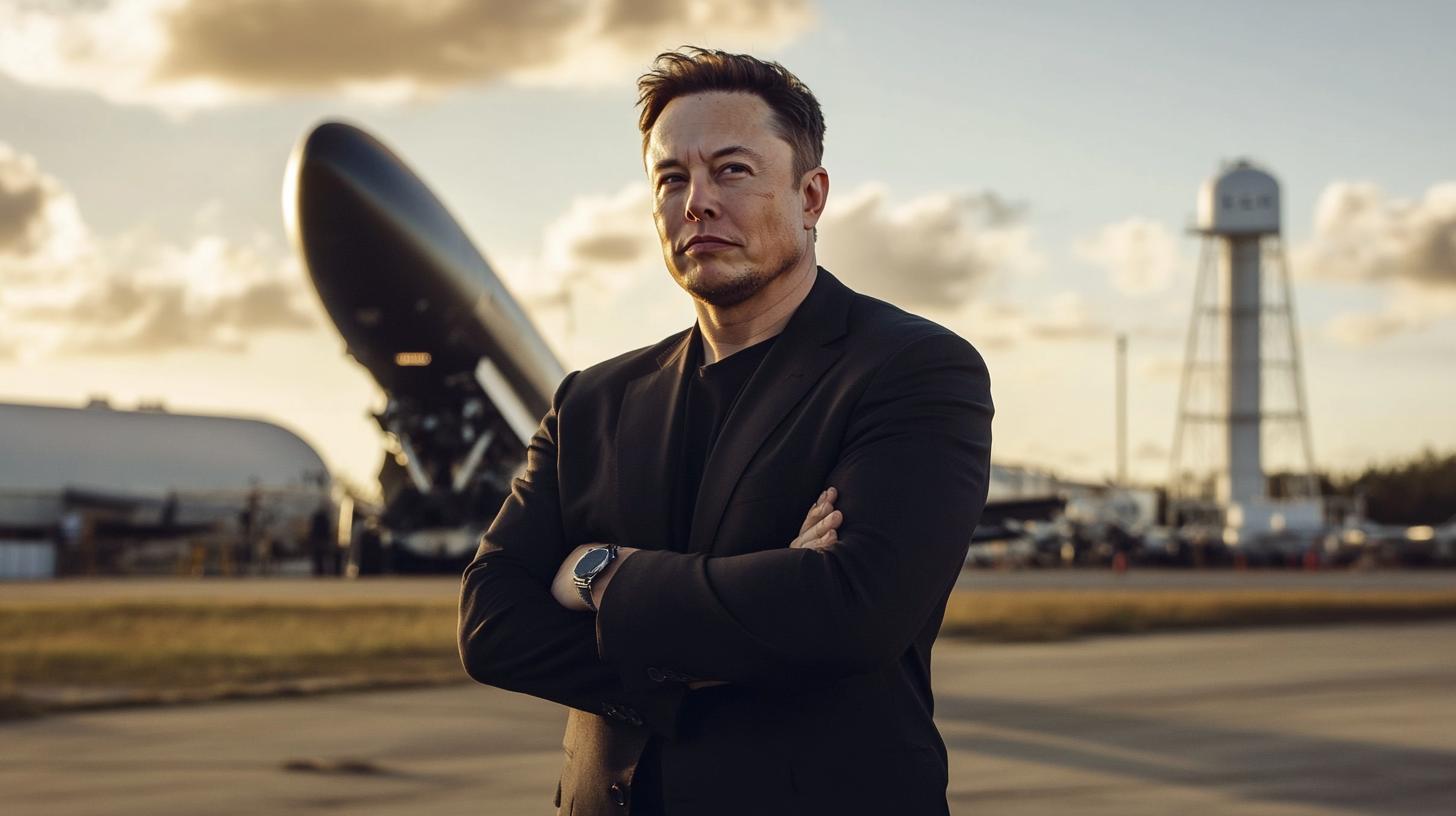Elon Musk, renowned entrepreneur and visionary, has once more ignited discussions on the evolution of air combat. Utilizing his platform on X, Musk shared a captivating video of synchronized drone swarms, accompanied by comments criticizing the ongoing production of manned fighter jets like the F-35.
While Musk’s views might sound controversial, they highlight an ongoing shift from traditional aerial warfare. He has been vocal since 2020 about the need to pivot away from manned aircraft, suggesting unmanned aerial vehicles (UAVs) should compete directly with models like the F-35. He emphasizes that the aerospace industry would benefit from meaningful competition, rather than relying solely on single models like the Joint Strike Fighter.
Musk envisions a future where drone fighter planes, controlled remotely by humans but enhanced with autonomous capabilities, could easily outmaneuver conventional fighter jets. His statements arrive as the F-35 program faces scrutiny over development challenges and hefty costs. Despite these criticisms, the F-35 remains integral to the defense strategies of countries such as the United States, the United Kingdom, and Japan.
The trend toward drone-based warfare isn’t just Musk’s vision; it mirrors a larger movement in military strategy favoring unmanned technology. Experts increasingly regard drones as essential for future combat scenarios, reducing risks to pilots while leveraging artificial intelligence for superior maneuverability.
The conversation Musk has sparked is part of a broader narrative about technology’s role in revolutionizing military capabilities and strategy. As debates continue, there’s little doubt that drones will play a significant role in shaping the future of warfare.
The Future of Warfare: Are Drones Set to Replace Fighter Jets?
The world of military aviation is on the cusp of transformative change as the debate over manned versus unmanned aircraft intensifies. With figures like Elon Musk advocating for a drone-dominated future, it’s crucial to explore the potential implications for humanity and technology. Could drones truly replace traditional fighter jets? What are the upsides and downsides, and how will this evolution affect global military dynamics?
Interesting Facts and Controversies
The idea of drones taking over air combat might seem like a science fiction narrative, but it’s rapidly becoming a reality. The fascination with drones extends beyond their ability to execute precise maneuvers; their success is tethered to advancements in artificial intelligence (AI) and robotics. One of the most intriguing aspects is the potential for swarms of drones acting in concert, which could overwhelm traditional military defenses—a point Musk himself demonstrated with a mesmerized audience through synchronized drone swarm displays.
However, this shift is not without controversy. The primary concern is ethical—autonomous drones with decision-making capabilities introduce questions about accountability in warfare. Furthermore, there’s anxiety over cybersecurity threats. Could hacking render these drones a liability?
Advantages and Disadvantages
Advantages:
1. Reduced Human Risk: By employing unmanned systems, the risks to human pilots are eliminated, potentially saving countless lives.
2. Cost Efficiency: Over time, drones could prove less costly than maintaining fleets of manned aircraft. They are often smaller and require less operational infrastructure.
3. Enhanced Combat Capability: Equipped with AI, drones can perform maneuvers and tactics that might be impossible for human pilots, paving the way for novel combat strategies.
Disadvantages:
1. Ethical Concerns: As unmanned systems assume direct roles in warfare, they pose significant moral questions. How do we hold technology accountable for civilian casualties or unintended conflicts?
2. Security Risks: Drones are susceptible to hacking, potentially turning these advanced systems against their operators.
3. Dependence on Technology: The greater reliance on sophisticated technology increases vulnerability. Any malfunction or failure could have pronounced consequences.
Impact on Humanity and Technology
The discussion transcends military applications. Innovations in UAV technology could spill over into civilian areas, influencing sectors such as agriculture, logistics, and emergency response. However, as the boundaries of AI and autonomous systems expand, so do the instances of privacy invasion and ethical dilemmas.
Related Questions and Answers
Will drones fully replace manned fighter jets?
While drones are increasingly integral, experts argue that a complete replacement isn’t imminent. Instead, the future likely holds a blend of both manned and unmanned systems, each with specialized roles.
What industries are likely to benefit from advancements in drone technology?
Beyond military uses, drones promise advancements in search and rescue operations, agriculture (e.g., crop monitoring), and delivery services. Their ability to traverse difficult terrains efficiently makes them invaluable in these areas.
For more information, keep an eye on discussions surrounding technological advancements and their broader implications on Reuters and TechCrunch.
As we navigate this new era, one thing remains clear—the integration of drones in warfare is set to redefine not only military strategy but also profoundly impact technological progress and its role in society.


















